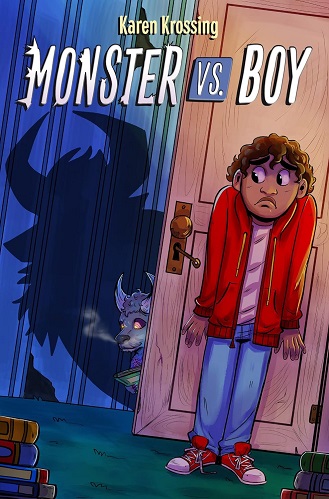On the edge of town, a boy named Dawz lives with his sister and their uncle-turned-adoptive-father, Pop. No one in their ramshackle house knows that a monster – who is smaller than a bear cub – lives in Dawz’s bedroom closet. She calls herself Mim. When a series of events forces Mim to leave her closet, she sets out on a quest to unlock the magic of books, but will Dawz be willing to help her? The story of a monster who desperately wants to be seen and the reluctant boy who wishes he weren’t the only one who could, this exploration of found family, fear and mental health, and intergenerational trauma begs the question: What if the monsters that haunt us aren’t monsters at all?
On the surface, what drives Dawz is creating unique recipes for the Baker’s Brawl with his best friend, Atlas. Deep down, Dawz struggles with the trauma and guilt from his mother’s mental illness, resulting in her leaving Dawz and his little sister, Jayla, to be adopted by his uncle (Pop). This trauma takes the form of a monster in his closet who comes to life and escapes through the window. The story then rotates between Dawz’s point of view and that of the monster – a small, gray-furred and purple-scaled creature who calls herself Mim.
What follows is a struggle between the monster, who abhors Dawz but realizes he can’t live without him, and Dawz, who wants to keep the monster a secret but desperately needs to name and deal with his trauma.
The story straddles a delicate balance between the darkness of mental illness and the gentleness and humor of friends and family. The portrayal of the monster in particular is sweet, as the monster explores the real world from her own point of view. Dawz slowly realizes that naming and addressing “the monster” will not ostracize him from others, and will open him to a circle of friends and supportive adults who take him seriously and refrain from judgment.
The story is geared towards lower middle-grade readers who will enjoy the many (mis)adventures of the monster and Dawz’s creative baking combinations, while being exposed to a safe and playful space for discussing mental illness and for learning how to face their fears.
-James Steeves


